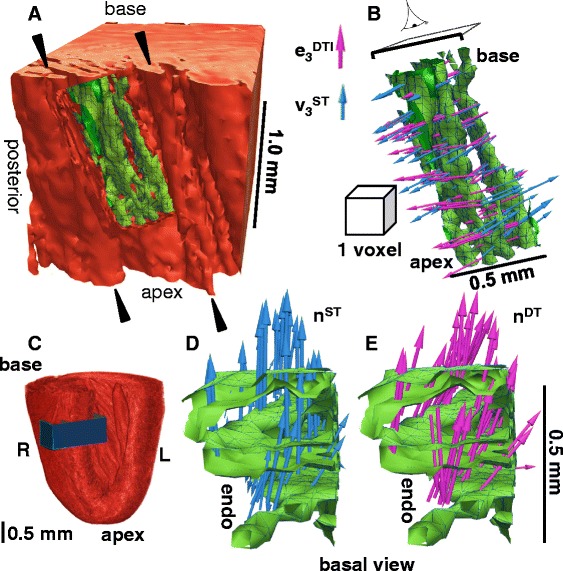Figure 5.

Visualization of the FLASH laminar architecture in a left ventricle septal ROI. A - The ROI is viewed so that the endocardial trabeculation is seen (black arrowheads); this trabeculation is continuous with the ventricular laminar architecture. In a small region of the myocardium the laminae have been segmented using an intensity threshold contour, and the 3D contour is colored green. B – the structure of these segmented contours are shown in the same orientation as in (A) and the ST (blue) and DTI (purple) putative sheetlet-normal vector orientations (e 3 DTI and v 3 ST) are shown on the sheetlet interstices. The size of a DTI voxel (200 μm isotropic) is shown. C – the cardiac location of the septal ROI. D – a view from the cardiac base onto the segmented laminae is shown, with the ST sheetlet normal vectors (blue). E – likewise, with the DTI sheetlet normal vectors (purple). DTI: Scan #1, 6-direction, b = 1000 s/mm2; ST: Scan #8; DTW = 3, STW = 3. R: right; L: left; endo: endocardium; FLASH: fast low angle shot; ST: structure tensor of FLASH data; DTI: diffusion tensor magnetic resonance imaging; DTW: derivative template width STW: smoothing template width. The symbols for vectors and derived angles are defined in Table 2.
